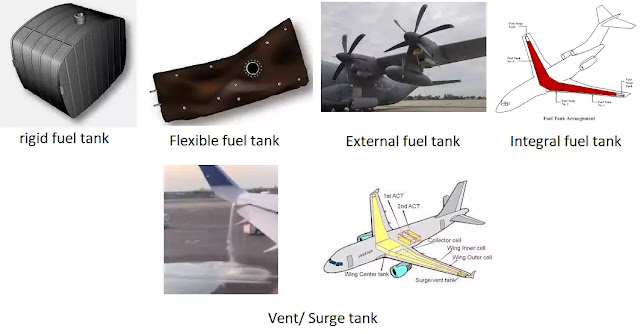What are the different types of fuel tanks placed in an aircraft? What are the functions of the vent tank?
The fuel tanks are placed very strategically on the wings of an aeroplane. Obviously, there are a number of scientific reasons behind doing so.
There are four types of fuel tanks found in the aviation industry:
- Rigid fuel tank: these tanks are not manufactured at the time of production of the aircraft but are separately built and installed in the fuselage. They were used in old aircraft. They had an advantage, in time of maintenance they can be separated out.
- External fuel tanks: these tanks are placed at the end of the aircraft wings. Mostly used by the small aviation jets such as the Learjet. Unlike rigid tanks, they are developed at the time of manufacturing. They save the aircraft from the induced drag generated at takeoff often called vertex generation.
- Flexible fuel tank: also called fuel bladder used for saving space as it enlarges as the fuel goes in.
- Integral fuel tank: used by all modern aircraft. They are placed inside the wings structure and the central fuselage which helps to store the highest volume with the lowest tank weight. The wings tank is divided into three parts, the one close to the aircraft’s body is the inner tank, the one in the middle is the outer tank, and at the tip of its wins is the vent tank. The empty space of the fuselage is also used to store fuel and is called the central tank.
A vent tank also called a surge tank, has the most important role in the fuel system.
- It helps in maintaining the air pressure of the fuel tank during flight.
- In case of expansion of fuel due to overheating, the surge tank provides extra space.
- At the time of refueling, it helps in the adjustment of the excess fuel.
Tags:
Aeroplanes

